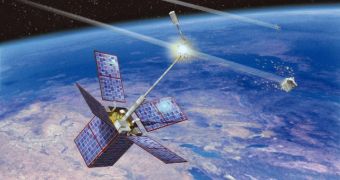In the absence of active, aggressive action for removing space junk from low-Earth orbit (LEO), spacecraft and satellite launching to space will soon be at a tremendous risk of destruction during ascent. Experts say that the situation in space is currently reaching a critical status.
At this point, the space industry need to comply with a variety of mitigation measures meant to reduce the amount of debris that are put into LEO, but that will not be enough to solve the problem. These actions may have had effect a couple of decades ago, but that time has long since passed.
Under these circumstances, active debris removal (ADR) remains the sole option space agencies and governments can pursue to solve the problem. However, doing so will most likely pose the most advanced engineering challenge of this century yet.
The warning comes from expert J.-C. Liou, who is based at the NASA Johnson Space Center (JSC) Orbital Debris Program Office, in Houston Texas. He says that no single nation or space agency can handle this task, and that international cooperation is absolutely required.
“As the international community gradually reaches a consensus on the need for ADR, the focus will shift from environment modeling to completely different challenges: technology development, systems engineering, and operations,” Liou said recently.
His opinion was published in the July issue of the Office-issued NASA Orbital Debris Quarterly News. “Orbital debris is an environment problem […] and it's everybody's problem, not just the United States' or a NASA problem. All the spacefaring nations share the same environment,” he tells Space.
The bad news is that even space agency with a 100 percent degree of compliance towards the most draconian safety norms are at risk of having their spacecraft impacted by space debris in LEO.
In other words, there is literally nothing else experts can do except start developing methods of removing junk from space. Several studies on this theme are already underway, but their conclusions indicate that the clean-up operation will be costly, lengthy and fraught with challenges.
To make matters worse, we need to hurry up with creating these technologies, since the more time space junk spend in orbit, the more they are likely to collide. These events create more junk, smaller in size, and therefore harder to eliminate.
Liou says that those who will get involved in these operations need to respect the four “Cs,” which are consensus, cooperation, collaboration and contributions. Other scientists say that this problem needs to be fixed before we can start pondering sending humans to the Moon or Mars.
“In the next five to 10 years, I think we'll be in a much better place than where we are today in terms of trying to remediate the environment. [However,] international collaboration will be the key. We all need to work together to move forward,” Liou concludes.

 14 DAY TRIAL //
14 DAY TRIAL //